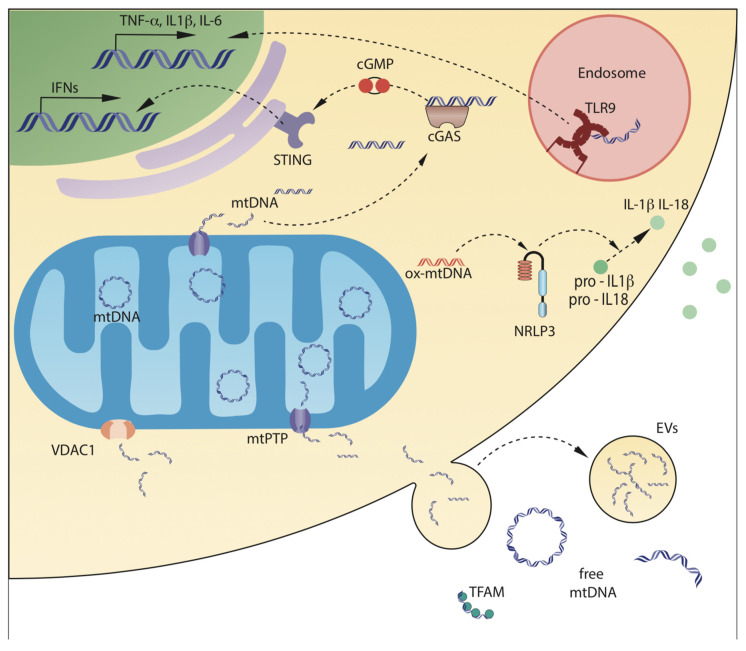Figure 2.
Mechanisms of mtDNA release from mitochondria, and of mtDNA sensing. mtDNA can be released by mitochondria into the cytosol, or in the extracellular space, either as circular molecules, DNA fragments, or DNA associated with mitochondrial proteins. Leakage from mDNA can be mediated by mitochondrial Permeability Transition Pore (mPTP), that causes swelling of the mitochondrial inner chamber and loss of impermeability of the Mitochondrial Inner Membrane (MIM), and by pores on the Mitochondrial Outer Membrane (MOM), formed by pro-apoptotic protein BAX or by the oligomers of the mitochondrial porin voltage-dependent anion-selective channel 1 (VDAC1). Once in the cytosol, mtDNA can interact with cGAS, which activates a pathway leading to enhanced transcription of type 1 interferons, or with NLRP3, particularly when oxidized. NLRP3 inflammasomes activate IL-1β and IL-18 by post-translational cleavage. Cells can also take up mtDNA from surrounding environment by phagocytosis; once in the endosomes, mtDNA can interact with the Toll-like receptor 9, which activates a pathway leading to transcription of pro-inflammatory cytokines TNF-α, IL-1β, and IL-6. Finally, mtDNA can be released outside the cells either by passive release, mediated by rupture of plasma cell membrane integrity, or by active release through extracellular vesicles.

